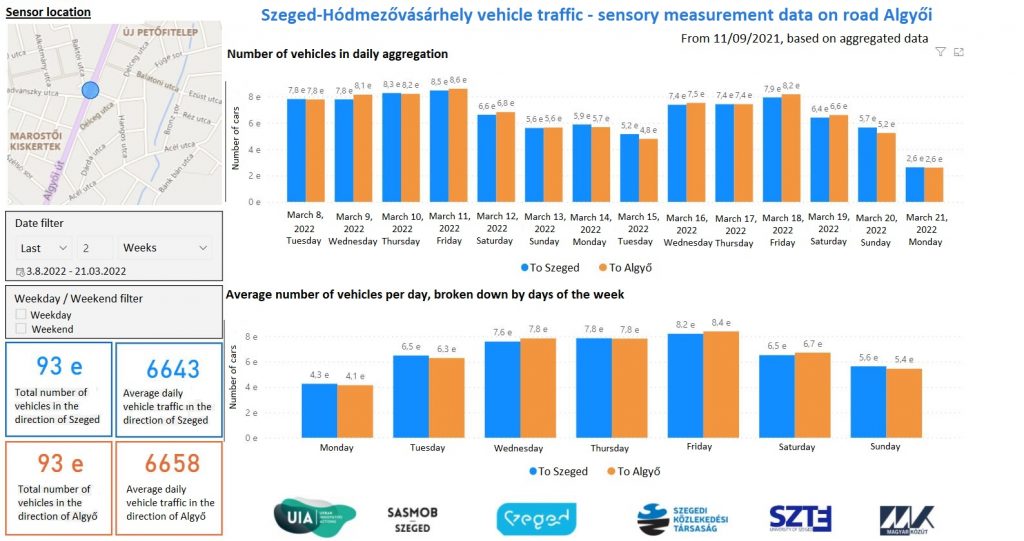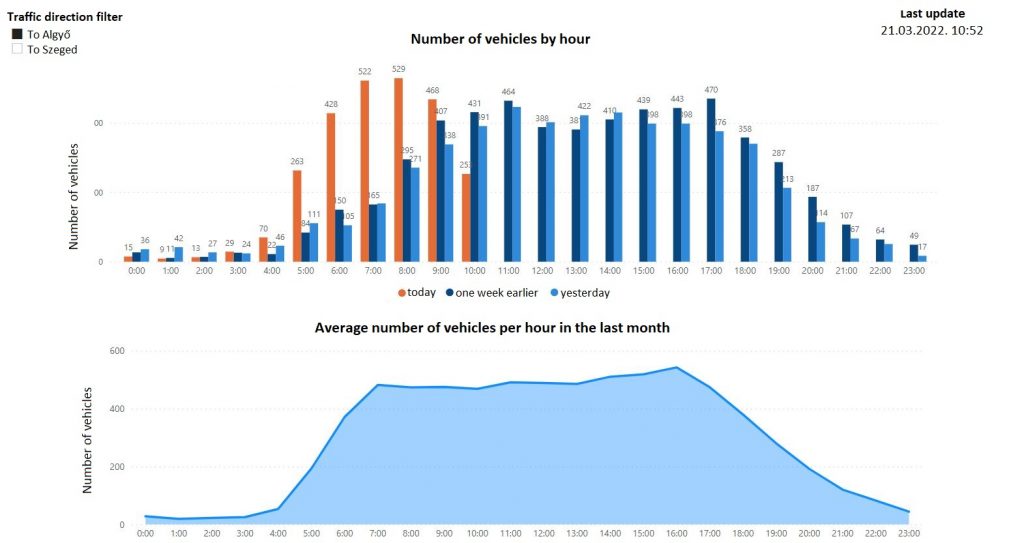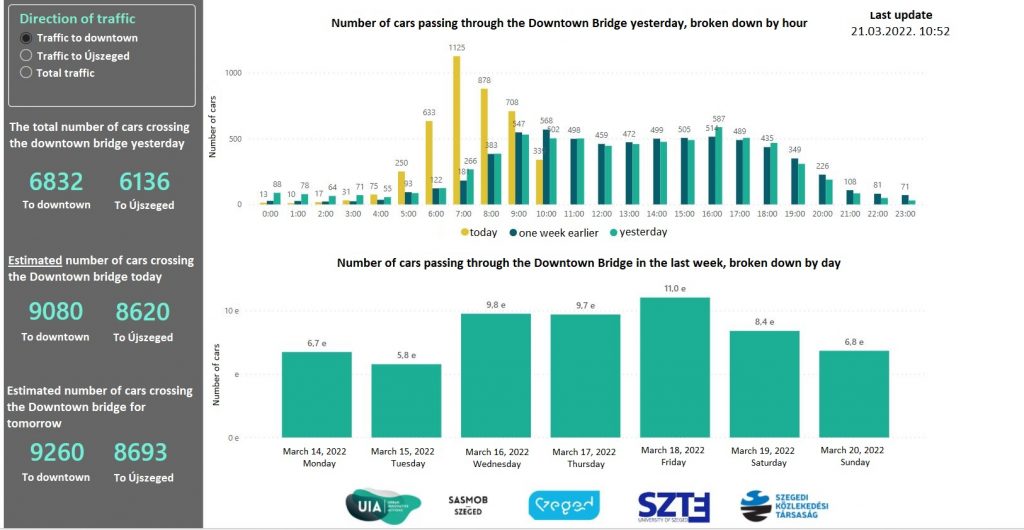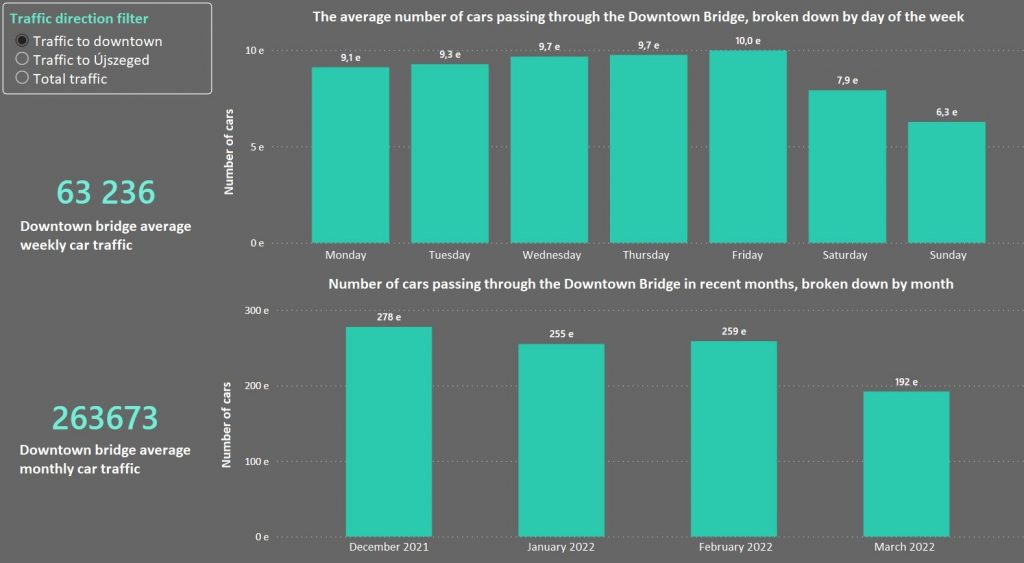Traffic sensors are now live in Szeged!
Nowadays, it is an unquestionable fact that car traffic is one of the most significant elements of urban transport and the proportion of motorists is not (yet) declining. This trend causes a lot of problems for larger cities, including Szeged.
Traffic jams, noise pollution, air pollution- just a few examples of the inconvenience caused by heavy traffic, but the line could still be continued.
Recognizing the problem, serious developments have taken place in Szeged in the recent years, e.g. in the field of electric public transportation and the development of cycling infrastructure. However, this has not proved sufficient, as car use is largely linked to commuting to work. As a result, the starting point of the SASMob project, working together with Szeged employers and the University of Szeged, is to encourage those who go to work to use sustainable transport method, and then to measure the impact of the measures taken in this matter.
Within the framework of the project, a number of elements supporting sustainable transport have been implemented, however, in order to organize transport in Szeged, it is essential that the city has adequate data on traffic. After all, a well-planned traffic order can reduce the amount of traffic jams and make the city more liveable.
To this end, a sensor-based passenger and traffic counting system was established in Szeged as part of the SASMob project, based on a technology patented by the Department of Software Development of the Faculty of Science and Informatics of the University of Szeged.
As part of the project, traffic counters were installed at two locations, at the Downtown Bridge and at the intersection of Algyői út and Diadal utca. Sensors use artificial intelligence to detect and track cars to determine the number of vehicles passing through. As the system only transmits numbers, the protection of personal data is maximized.
The sensors are already live and the results can be viewed on the data visualizations made by the employees of the Szeged Transport Company!
On the first page of the data transmitted by the sensor on Algyői út, the number of vehicles in the direction of Szeged and Algyő can be seen broken down by day, and the average vehicle numbers can also be broken down by the days of the week. With the date filter, you can even search for previous data.

On the second page, you can already see the number of vehicles broken down by hour (indicating the date of the last update) and the average number of cars passing through the intersection per hour in the last month. The direction of the traffic can also be selected, so we can see the latest data in the direction of both Szeged and Algyő.

The sensor located at the Downtown Bridge works on a similar principle, it monitors the cars moving on the bridge in the direction of the city centre and Újszeged. On the first page of the data visualization that processes the sensor data, we can see the number of cars crossing the bridge by the current day, the day before and the days before a week, and by the daily for the past week. What can be especially useful is that the system estimates the number of expected cars in both directions for today and tomorrow based on the data so far. The algorithm is also capable of detecting pedestrians and cyclists, however, this feature has recently been developed, so it is currently in the test period, so the data is not yet publicly available. And at the moment, scooter recognition is being programmed by TTIK.

On the second page, we can see the average daily number of cars observed on each day since the start of the measurements, as well as the average number of cars in recent months.

Overall, it can be said that this data can contribute to more efficient traffic management in the area and can also serve as useful information for drivers. The data transmitted by the sensors are available here and here.
We recommend everyone to browse the data transmitted by the sensors, you can get useful and interesting information!